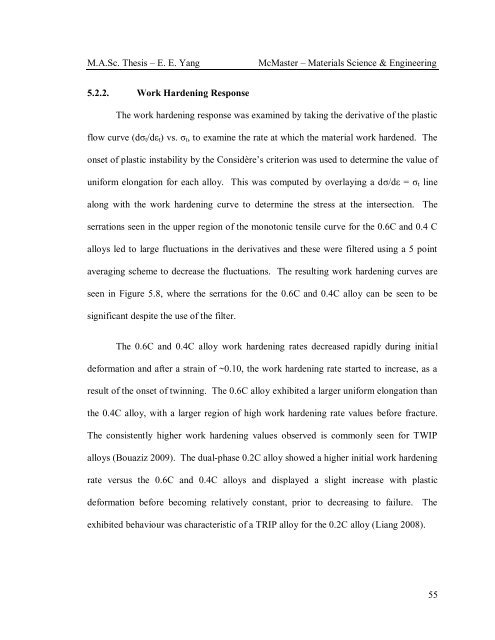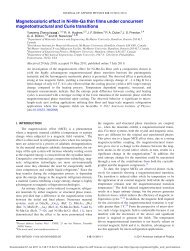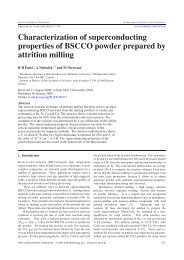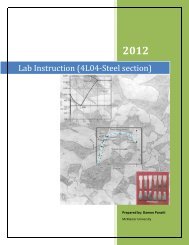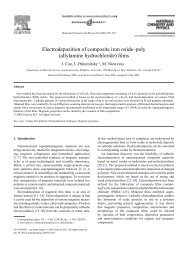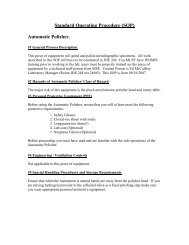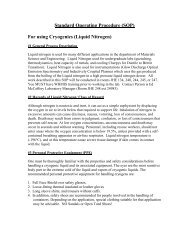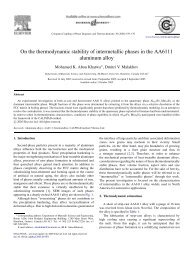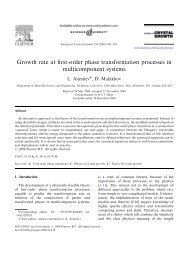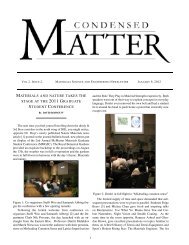the effect of carbon content of the mechanical properties - McMaster ...
the effect of carbon content of the mechanical properties - McMaster ...
the effect of carbon content of the mechanical properties - McMaster ...
You also want an ePaper? Increase the reach of your titles
YUMPU automatically turns print PDFs into web optimized ePapers that Google loves.
M.A.Sc. Thesis – E. E. Yang <strong>McMaster</strong> – Materials Science & Engineering<br />
5.2.2. Work Hardening Response<br />
The work hardening response was examined by taking <strong>the</strong> derivative <strong>of</strong> <strong>the</strong> plastic<br />
flow curve (dσt/dεt) vs. σt, to examine <strong>the</strong> rate at which <strong>the</strong> material work hardened. The<br />
onset <strong>of</strong> plastic instability by <strong>the</strong> Considère’s criterion was used to determine <strong>the</strong> value <strong>of</strong><br />
uniform elongation for each alloy. This was computed by overlaying a dσ/dε = σt line<br />
along with <strong>the</strong> work hardening curve to determine <strong>the</strong> stress at <strong>the</strong> intersection. The<br />
serrations seen in <strong>the</strong> upper region <strong>of</strong> <strong>the</strong> monotonic tensile curve for <strong>the</strong> 0.6C and 0.4 C<br />
alloys led to large fluctuations in <strong>the</strong> derivatives and <strong>the</strong>se were filtered using a 5 point<br />
averaging scheme to decrease <strong>the</strong> fluctuations. The resulting work hardening curves are<br />
seen in Figure 5.8, where <strong>the</strong> serrations for <strong>the</strong> 0.6C and 0.4C alloy can be seen to be<br />
significant despite <strong>the</strong> use <strong>of</strong> <strong>the</strong> filter.<br />
The 0.6C and 0.4C alloy work hardening rates decreased rapidly during initial<br />
deformation and after a strain <strong>of</strong> ~0.10, <strong>the</strong> work hardening rate started to increase, as a<br />
result <strong>of</strong> <strong>the</strong> onset <strong>of</strong> twinning. The 0.6C alloy exhibited a larger uniform elongation than<br />
<strong>the</strong> 0.4C alloy, with a larger region <strong>of</strong> high work hardening rate values before fracture.<br />
The consistently higher work hardening values observed is commonly seen for TWIP<br />
alloys (Bouaziz 2009). The dual-phase 0.2C alloy showed a higher initial work hardening<br />
rate versus <strong>the</strong> 0.6C and 0.4C alloys and displayed a slight increase with plastic<br />
deformation before becoming relatively constant, prior to decreasing to failure. The<br />
exhibited behaviour was characteristic <strong>of</strong> a TRIP alloy for <strong>the</strong> 0.2C alloy (Liang 2008).<br />
55


